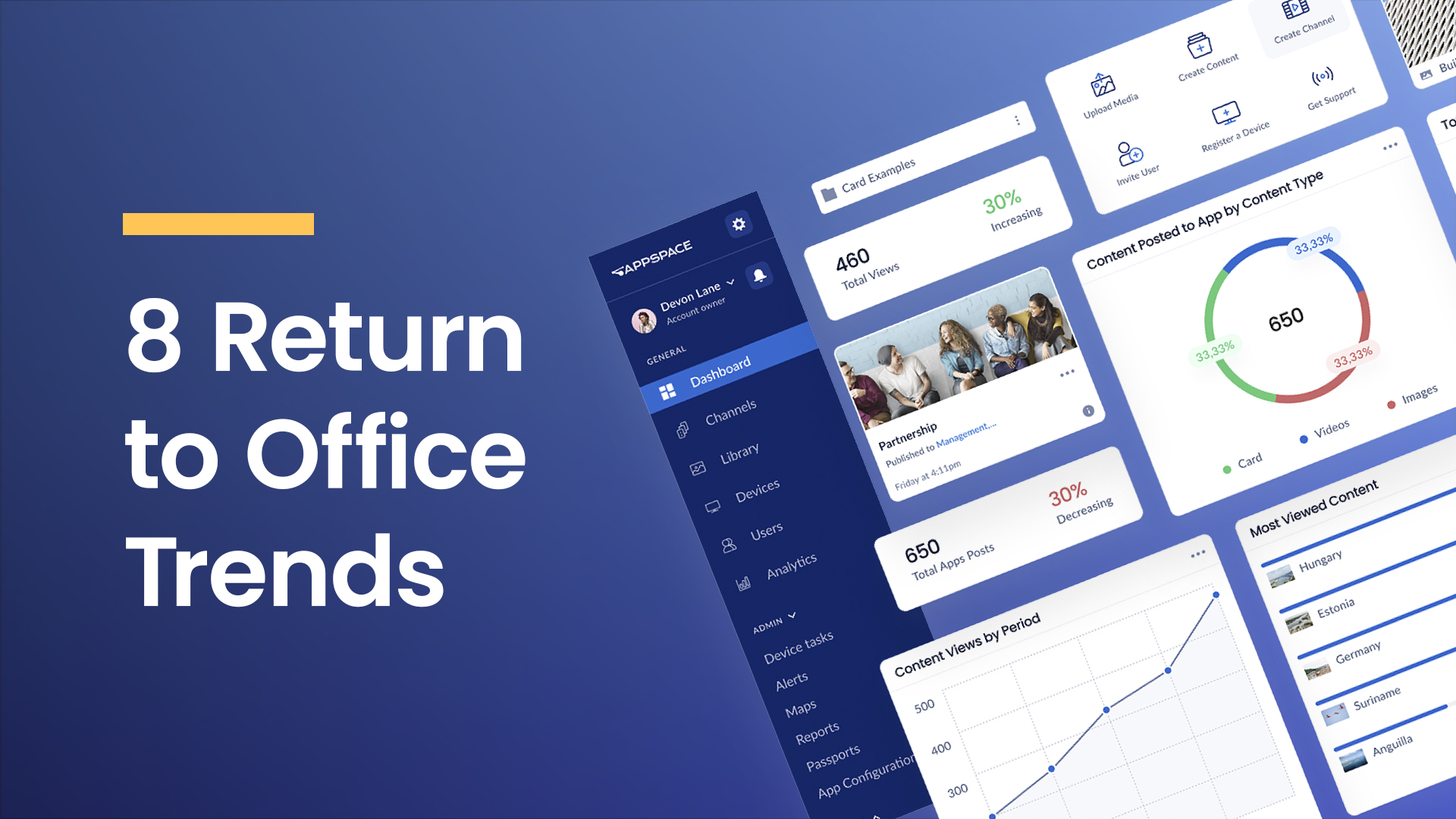In the last several weeks, more companies have announced their plans to return to the office. After chatting with several customers, it’s clear that policies can vary from one company to the next–this will not be a one size fits all strategy.
While each company will have different policies based on its business needs, there are a number of trends that are at the core of it all. After comparing notes on a number of our customers, these are 8 of the trends we see our customers’ return to office plans.
1. Change
This situation is an opportunity for a long-overdue workplace cultural change. The return to the office is an opportunity for many companies to accelerate a workplace cultural change from a very static layout to a dynamic and flexible hotelling workspace where resources are no longer limited. Companies are ready to bust out of cubicles and work in an open, collaborative environment when they’re in the office.1
2. Experience
There can be no sacrifice on the employee experience if we want to succeed. The employee experience needs to be even better than pre-pandemic. Having the flexibility to choose a space based on location, time, facilities, the proximity of colleagues will upgrade the workplace experience. Not only will this elevate the employee experience, but it will also help retain your workforce. Now more than ever, workers are demanding flexibility. One survey found 71% of respondents want flexible work to stay.2
3. Collaboration
The workplace is becoming a place for collaboration, not just a place to work from. Employees are going to be strategic with the time they spend in the office, using it mainly to work with team members face-to-face. It’s necessary to create a collaborative in-office environment keeping your desking set up, meeting spaces, and collaboration tools in mind.
4. Empathy
Leaders need to show empathetic leadership as we continue to navigate change. The ups and downs of the last year have taken a toll on everyone in different ways. Making empathetic leadership a priority will be deeply appreciated by the members of your organization.
5. Health & Safety
Build employee confidence that their workplace is a safe place. Deploy technology for employee tracking to help address and mitigate risk. Tools like space reservation and visitor management will help keep track of who is in the office and where they’ve been while present.
6. Planning
Rethink the office workspaces facilities to adapt to new needs. The hybrid workplace will require some innovative data-driven technology to understand the unique needs of your employees better. Evaluating the important types of workspace and how to reconfigure your office to meet health guidelines will take careful consideration and planning.
7. Flexibility
Redefining the workspace requires data. As employees return to the office, data will help adjust the workspace to meet their needs. Live data and projected data will allow facilities to plan and adapt quickly to new ways of working in the workplace. Make sure you’re able to check workplace analytics regularly to help make data-driven decisions.
8. One Platform
Invest in a single platform to deliver the safest and most productive workspace. Consolidating multiple existing workplace technologies into one tool will help minimize chaos. This investment will help streamline communication efforts, and employees will feel well connected.
While the execution of returning to the office will vary from business to business, implementing some or all of these trends will help enhance your return to office plans.
- “HSBC CEO Calls For Ditching Posh Executive Offices for Hot Desks and Hybrid Work Model”, Forbes, 2021
- “More than 2/3’s of staff want flexible work to stay”, Microsoft, 2021


